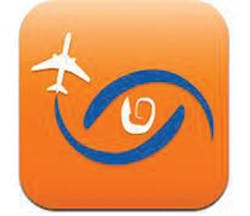Tech Bytes
HED: Study Finds Disconnect Between Mobile Device Use and Mobile Purchases
Travelers regularly search for flights, hotels and ground transportation using mobile devices, yet less than half are make mobile purchases. New research from FlightView digs into the mobile purchasing behavior of 3,186 travelers, revealing that more than 80 percent of respondents say concerns about mobile security and transaction interruptions no longer stop them from making travel purchases. Instead, issues with usability, type and timing of services presented, and underwhelming functionality are what hold travelers back from making mobile purchases.
Nearly 93 percent of respondents reported they used their smartphone to search for travel-related services like flights, hotels and ground transportation in the last 12 months. However, of the 88.7 percent who searched for flights, only 36.5 percent actually booked with their smartphone. More than half of respondents (52 percent) said it is too hard to enter all of the required information on small devices, and 55 percent responded they would rather use a laptop or desktop. Tablets fared better than smartphones as a point-of-sale for tickets, but not by much: 62 percent of travelers have searched for flights on their tablet over the past 12 months, and 49.3 percent actually purchased a ticket.
Airlines have a major opportunity to drive more ancillary revenue by pushing service and upgrade offers to travelers on the day of travel. But few airlines do this effectively. Only 28.8 percent of travelers have purchased an upgrade or add-on via an airline's mobile app or mobile website in the past 12 months. More than 80 percent of respondents, however, cited at least one upgrade they would consider purchasing if the airline pushed the offer to their mobile device before they boarded the plane: 58.7 percent would consider purchasing in-flight WiFi; 54.3 percent would consider upgrading to a seat with extra leg room; 41.8 percent would consider upgrading to a business- or first-class ticket; 40.1 percent would consider purchasing early boarding privileges.
When Tragedy Strikes: Social Media Disaster Planning
If you’re using social media for marketing, what should you say following a tragedy like the cargo plane crash in Afghanistan that killed seven Americans? Or the plane that ran off the runway, plunging into the sea, in Bali?
The age of digital marketing brings with it new challenges, including how to respond after a tragic event. After 9/11, one of the most painful days in American memory, most of us had time to pause, reflect and put on hold print, radio and TV marketing campaigns that might be viewed as inappropriate or offensive. With the advent of social media that’s not the way it works anymore, and the savvy airport/airline marketing team knows how and when to tie—or not to tie—a marketing message into the news of the day.
The following are a couple of suggested do’s and don’ts:
- • If you use automated posts scheduled through a site such as HootSuite, turn them off immediately. If people don’t find them insensitive and uncaring or silly, they’ll likely conclude your messages come from a robot--not a real person--which is just as bad.
- • Can you be helpful? Hours after the blasts in Boston, with cell phone service out in the city and family and friends desperately trying to connect with loved ones, Google.org launched “Person Finder: Boston Marathon Explosions.” There, individuals and organizations could share information about the status of marathon participants and spectators for those trying to find them.
- • Of course, social media is also about reactions and, for many, that’s a sincere expression of sympathy for and unity with those affected.
If you want to post something and you’re unsure about what to say, it might be worthwhile to take a breather and just say nothing for a day or two, or whatever time seems reasonable given the nature of the event.
Sometimes, saying nothing at all speaks volumes.
HED: Garmin Updates Pilot App
Garmin recently released an updated version of the Garmin Pilot app for the iPad and iPhone that incorporates the company’s dynamic navigation maps. The maps enable numerous capabilities including track-up orientation, faster map rendering, higher resolution at tighter zoom levels, and SafeTaxi integration on the moving map. The maps allow pilots to choose between track-up and north-up moving map orientation. They are also configurable, giving pilots the ability to tailor them to their personal preferences, including map color; visibility range; and label sizes for airports, NAVAIDS and more. Garmin’s state-of-the-art cloud computing technology enables seamless connectivity and information sharing between all Garmin Pilot-enabled mobile devices, saving all trips, aircraft, bookmarked flight plans, pilot details and user way points to the cloud.
HED: Clear to Expedite Security in San Antonio
CLEAR will launch its expedited traveler services at San Antonio International Airport (SAT) by summer 2013, allowing San Antonio travelers to speed through airport security in less than 5 minutes on average, bringing speed, predictability and service back to travel. Certified by the Department of Homeland Security as Qualified Anti-Terrorism Technology, CLEAR transforms the travel experience by allowing members to use their biometrics (fingerprint or iris) to speed through security at major U.S. airports.





